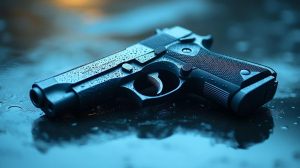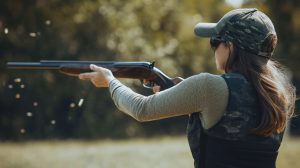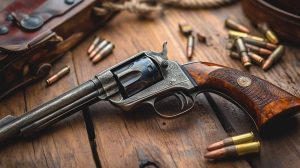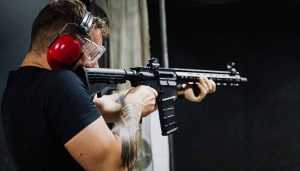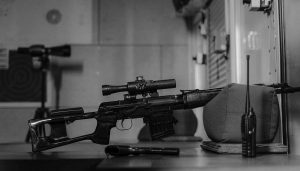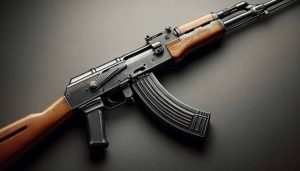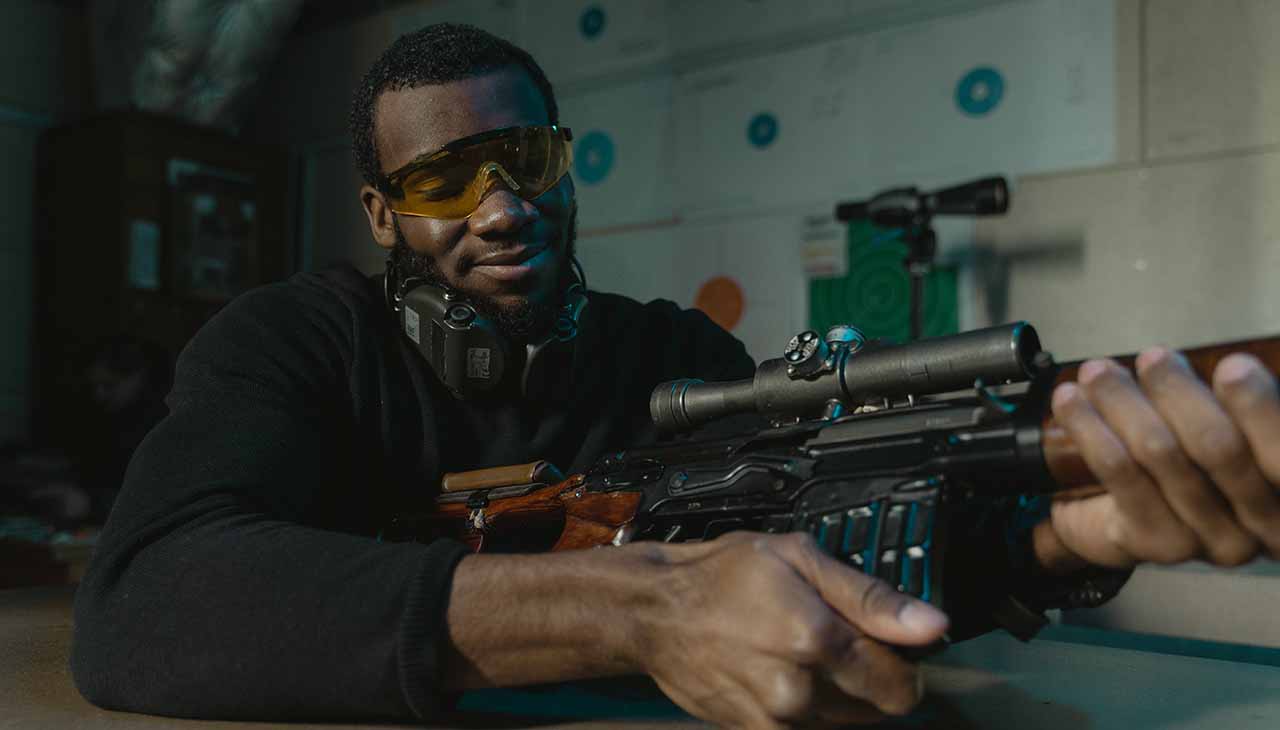
Whether you’re a firearm enthusiast, a hunter, or someone interested in self-defense, understanding the different types of guns is crucial. This will not only enhance your knowledge but also guide you in making informed decisions based on your specific needs. In this comprehensive guide, we will delve into the details and characteristics of five major types of guns, helping you navigate the diverse world of firearms with ease.
Handguns
Handguns are a type of firearm that is designed to be held and fired with one hand. They are commonly used for personal defense, law enforcement, and recreational shooting. Here are some key points about handguns:
- Definition and Characteristics: Handguns are compact firearms that are easily concealable and portable. They typically have a short barrel, a grip for holding, and a trigger mechanism for firing. Handguns come in different sizes and calibers, ranging from small pocket pistols to larger, more powerful handguns.
- Subcategories: There are two main subcategories of handguns: revolvers and semi-automatic pistols.
- Revolvers: Revolvers have a rotating cylinder that holds multiple rounds of ammunition. Each chamber of the cylinder aligns with the barrel, allowing the shooter to fire one round at a time by pulling the trigger. Revolvers are known for their reliability and simplicity of operation.
- Semi-Automatic Pistols: Semi-automatic pistols use a magazine to hold multiple rounds of ammunition. When the trigger is pulled, the pistol automatically loads a new round into the chamber from the magazine. Semi-automatic pistols are popular due to their higher ammunition capacity and faster reloading capabilities.
- Uses and Applications: Handguns serve various purposes depending on the user’s needs:
- Personal Defense: Handguns are commonly chosen for personal protection due to their compact size and ease of use. They can be carried discreetly and provide a means of self-defense in case of a threatening situation.
- Law Enforcement: Police officers and other law enforcement agencies often carry handguns as part of their duty gear. Handguns offer the advantage of maneuverability in close-quarter situations while still providing effective stopping power.
- Recreational Shooting: Handguns are also used for target shooting, competitive shooting sports such as IPSC or IDPA, and recreational shooting activities. They provide an enjoyable shooting experience and allow for honing marksmanship skills.
It’s important to note that responsible ownership and proper training are essential when it comes to handguns or any firearm. Always follow local laws and regulations regarding handgun ownership, storage, and usage for maximum safety.
Shotguns
Shotguns are a type of firearm that are designed to be fired from the shoulder, using both hands. They are known for their widespread and high stopping power, making them popular for hunting, sport shooting, and personal defense. Here are some key points about shotguns:
- Definition and Characteristics: Shotguns are firearms that use shells filled with small pellets (shot) or a single projectile (slug) as ammunition. They have a smooth bore barrel (without rifling) and are typically designed to fire multiple shots with each pull of the trigger. Shotguns come in different gauges, with 12 gauge being the most common.
- Types of Shotguns:
- Pump-Action Shotguns: These shotguns require the user to manually cycle the action by sliding the forend back and forth to eject the spent shell and load a new round into the chamber.
- Semi-Automatic Shotguns: These shotguns use gas pressure or recoil to automatically cycle the action, ejecting the spent shell and loading a new round into the chamber with each pull of the trigger.
- Break-Action Shotguns: These shotguns have a hinged design and break open at the breech to load and unload shells. They are available in single-shot or double-barrel configurations.
- Uses and Applications: Shotguns serve various purposes depending on the user’s needs:
- Hunting: Shotguns are commonly used in hunting for small game, waterfowl, and upland birds. The wide spread of the shot allows for a greater chance of hitting a moving target, especially in close-range situations.
- Sport Shooting: Shotguns are used in various shooting sports such as skeet shooting, trap shooting, and sporting clays. These sports involve shooting clay targets launched into the air, testing the shooter’s accuracy and skill.
- Home Defense: Shotguns are often considered an effective option for home defense due to their large shot spread and stopping power. The sound of racking a pump-action shotgun can act as a deterrent to potential intruders.
- Recreational Shooting: Many people enjoy shooting shotguns for recreational purposes, either at a shooting range or on private land. It can be a challenging and enjoyable hobby.
It’s important to note that responsible ownership, proper training, and understanding of local laws and regulations are essential when it comes to shotguns or any firearm. Safety should always be a top priority when handling firearms.
Rifles
Rifles are a type of firearm designed to be fired from the shoulder, using the aid of a stock for stability. Known for their long-range accuracy and power, rifles are popular for hunting, competitive shooting, and military usage. Here are some key points about rifles:
- Definition and Characteristics: Rifles are firearms with a long barrel that has a series of grooves or ‘rifling’ cut into its interior. The rifling causes the bullet to spin as it travels down the barrel, improving the bullet’s flight stability and accuracy over long distances. Like other types of firearms, rifles come in a variety of sizes and calibers.
- Types of Rifles:
- Bolt-Action Rifles: These are manually operated rifles where the user manually cycles the action by lifting and pulling back a handle, ejecting the spent cartridge and feeding a new round from the magazine.
- Semi-Automatic Rifles: These rifles automatically eject the spent cartridge and load a new round into the chamber after each trigger pull.
- Lever-Action Rifles: These rifles have a lever that ejects and reloads the cartridge when worked by the shooter.
- Uses and Applications: Rifles serve various purposes depending on the user’s needs:
- Hunting: Rifles are commonly used for hunting large game due to their power and long-range accuracy.
- Sport Shooting: Rifles are used in various shooting sports, such as precision shooting and 3-gun competitions.
- Military and Law Enforcement: Rifles are a standard issue for many military and law enforcement agencies due to their power and range.
- Recreational Shooting: Shooting rifles at a range can be a fun and challenging hobby.
3. It’s important to note that responsible ownership, proper training, and understanding of local laws and regulations are essential when it comes to rifles or any firearm. Safety should always be a top priority when handling firearms.
Assault rifles
Assault rifles are a subset of rifles designed for rapid-fire and tactical operations. Known for their versatile use in military and law enforcement, these rifles are characterized by their selective fire capabilities and intermediate cartridges. Here are some key points about assault rifles:
- Definition and Characteristics: Assault rifles are military firearms that can switch between semi-automatic and fully automatic modes. They utilize intermediate cartridges- more powerful than those used in handguns but less powerful than those used in traditional rifles. They usually come with detachable magazines and often have features such as pistol grips or folding stocks for increased maneuverability.
- Types of Assault Rifles: Common types include the U.S. M16 and Russian AK-47, among others. Each type of assault rifle offers various features and capabilities, reflecting the needs of the armed forces they serve.
- Uses and Applications: Primarily, assault rifles serve in military and law enforcement:
- Military: The selective fire capability, allowing for both semi-automatic and automatic fire, makes them a mainstay in modern warfare.
- Law Enforcement: SWAT teams and similar units may use these rifles during high-risk operations due to their versatility and firepower.
4. It’s crucial to note that in many countries, including the U.S., civilian ownership of fully automatic firearms, including assault rifles, is heavily regulated and, in some cases, banned. As with any firearm, responsible ownership, proper training, and understanding of local laws and regulations are essential. Safety should always be a top priority when handling firearms.
Submachine guns
Submachine guns are compact, automatic firearms designed to fire pistol cartridges, making them more manageable in close-quarters combat. The combination of rapid-fire and high magazine capacity gives the submachine gun its distinctive function in tactical situations. Let’s delve into some key points about submachine guns:
- Definition and Characteristics: Submachine guns are lightweight, automatic weapons that fire pistol rounds. They usually have a high rate of fire and are designed for close-quarters combat. Characteristically, they have detachable box magazines and often include a shoulder stock for stability during firing.
- Types of Submachine Guns: There is a wide range of submachine guns, with some of the most renowned being the German MP5, the American Thompson submachine gun (commonly known as the “Tommy Gun”), and the Israeli UZI. Each of these has unique features and design elements that suit different tactical needs.
- Uses and Applications: Submachine guns are used primarily in situations where high firepower and maneuverability are required within a small area:
- Military: Submachine guns are often used by special forces during close-quarters combat situations.
- Law Enforcement: SWAT teams and similar units use submachine guns in close-quarters situations due to their compact size and high rate of fire.
- Personal Defense: In some jurisdictions, submachine guns are available for civilian use, typically in a semi-automatic configuration.
4. As always, it’s important to stress that responsible ownership, proper training, and adherence to local laws and regulations are paramount when it comes to submachine guns or any firearm. Safety should always be the top priority when handling firearms.
